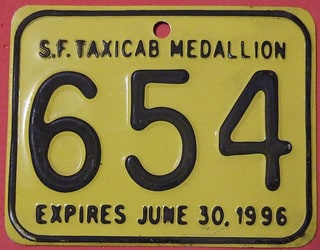A Post-medallion World

The priceonomics blog has a great post on traditional taxis (medallion-based systems) vs new ridesharing startups (technology-based systems like Sidecar, Lyft, Uber and Instantcab). Its a great read about the current state of ridesharing in cities and the history and economics of the taxi medallion system.
The article talks about why medallions are outdated:
When this medallion system was introduced in New York City in 1937, there were 11,787 issued. That number remained constant unti 2004. Today there are 13,150.
The economics of being a taxi driver:
UCLA professors Gary Blasi and Jacqueline Leavitt found that taxi drivers work on average 72 hours a week for a median take home wage of $8.39 per hour.
The transformation from medallions to free market:
According to publicly available statements from ride-sharing companies, there is strong evidence that there are already more community drivers on the road than regular taxis in San Francisco. In San Francisco, the transformation from a medallion constrained taxi system to a free market is nearly complete. These ride-sharing companies are all rapidly expanding across the country.
The government's reaction:
“These medallions are public assets. The value belongs to the people of San Francisco for the benefit of the transportation system.” - Ed Reiskin, San Francisco Municipal Transportation Agency Director
“I really hope we keep the medallion system and get rid of ride-sharing apps.” - No one who uses San Francisco Municipal Transportation, ever